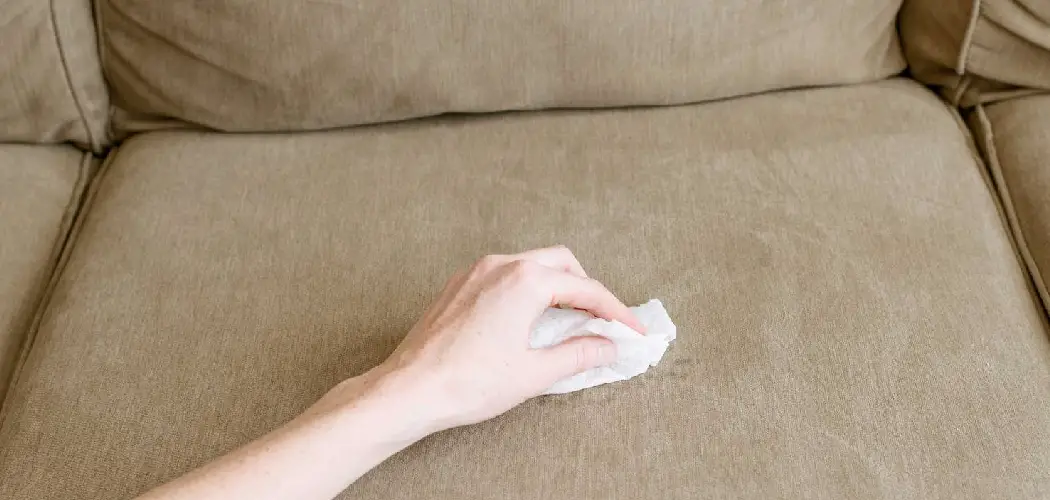Grease stains on couches are a common household issue, often resulting from eating meals, cooking, or simply resting on furniture with oily skin. The presence of these stains can be unsightly and frustrating, diminishing the aesthetic appeal of your living space. It is crucial to address grease stains promptly, as allowing them to set can make them increasingly challenging to remove.
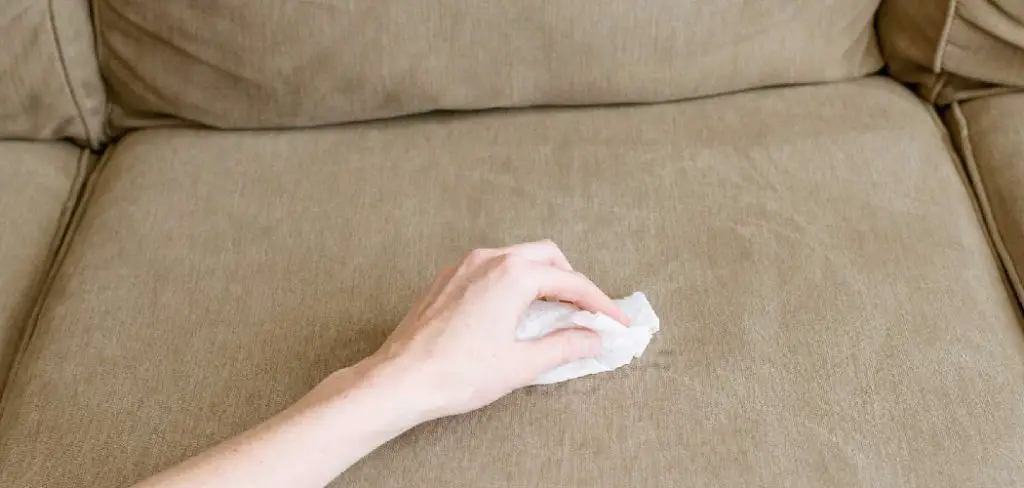
When considering how to remove grease from couch upholstery, it’s important to recognize that different materials may require specific cleaning techniques to avoid damage. Effective methods for tackling these stains involve using easily accessible products such as baking soda, dish soap, or commercial stain removers designed for upholstery.
By understanding and applying the proper techniques for your couch material, you can ensure the longevity and cleanliness of your furniture, maintaining a welcoming and comfortable environment in your home.
Identifying the Couch Material
Understanding the fabric of your couch is a critical step in effectively removing grease stains. Different types of couch materials react differently to cleaning agents, and using the wrong method can cause damage. Here’s an overview of some common couch materials and how they influence the cleaning process:
Types of Couch Fabrics
Cotton: A popular choice for its softness and breathability, cotton is relatively durable but can be prone to staining. It’s important to act quickly when cleaning cotton, and using a gentle cleanser like mild dish soap is often effective. Avoid harsh chemicals that might damage the fibers.
Polyester: Polyester is often found in modern couches because it is known for its durability and resistance to stretching and shrinking. It handles cleaning with water-based solutions well, making it easier to tackle grease stains with standard fabric cleaners or a mix of water and mild detergent.
Leather: Leather couches add a touch of luxury but require special care when stained. Avoid using water, as it can leave marks. Instead, opt for leather-specific cleaners and conditioners. Blotting the stain gently with a dry cloth is often recommended before applying any products.
Microfiber: This synthetic fabric is prized for its stain-resistant properties, though grease can still pose a challenge. Microfiber responds well to gentle cleaning with water-based solutions. Commercial upholstery cleaners designed for microfiber can also be effective.
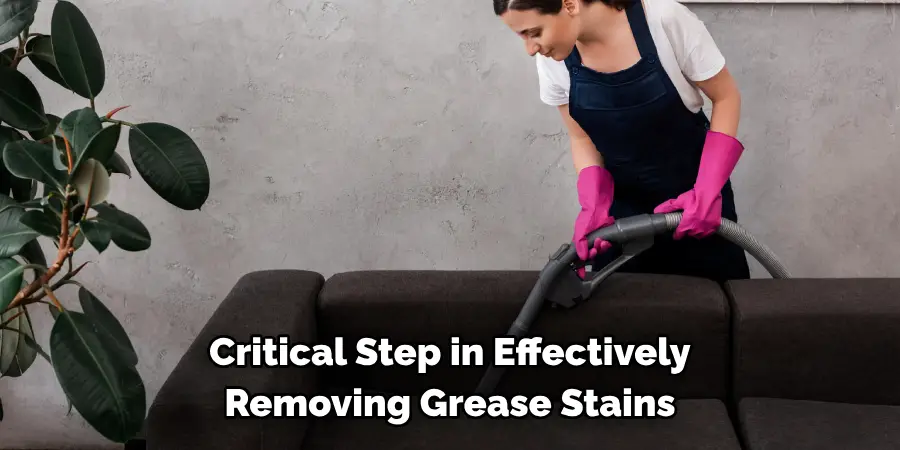
Care Labels and Manufacturer Guidelines
Each couch typically comes with a care label that provides essential cleaning information. These labels feature cleaning codes that guide you on the appropriate cleaning method:
- W: Indicates that water-based cleaning agents are safe to use. This is common for many fabric sofas.
- S: Suggest the use of solvent-based cleaners. Such sofas should be cleaned with dry-cleaning solvents or water-free products.
- WS: Implies that both water-based and solvent-based cleaners are appropriate. Still, it’s crucial to test a small area first.
- X: Stands for vacuum only, indicating that the couch should only be cleaned with a vacuum or by professional services.
Understanding these symbols ensures that you’re not inadvertently harming your couch during the cleaning process.
Testing for Colorfastness
Before applying any cleaning product to your entire couch, testing for colorfastness is important. This simple test helps prevent discoloration caused by cleaning agents. Follow these steps to conduct a colorfastness test:
- Choose an inconspicuous area of the couch, such as the back or underside.
- Dampen a white cloth with the cleaning solution you intend to use.
- Gently blot the area with the cloth and let it sit for a few minutes.
- Check the cloth and the fabric for any color transfer or damage.
If no discoloration occurs, proceed with cleaning the stain as planned. If the fabric shows signs of color bleed, reconsider using that product or method and consult professional cleaning services if necessary.
By accurately identifying your couch material and following the appropriate cleaning guidelines, you can confidently address grease stains and maintain the couch’s original beauty.
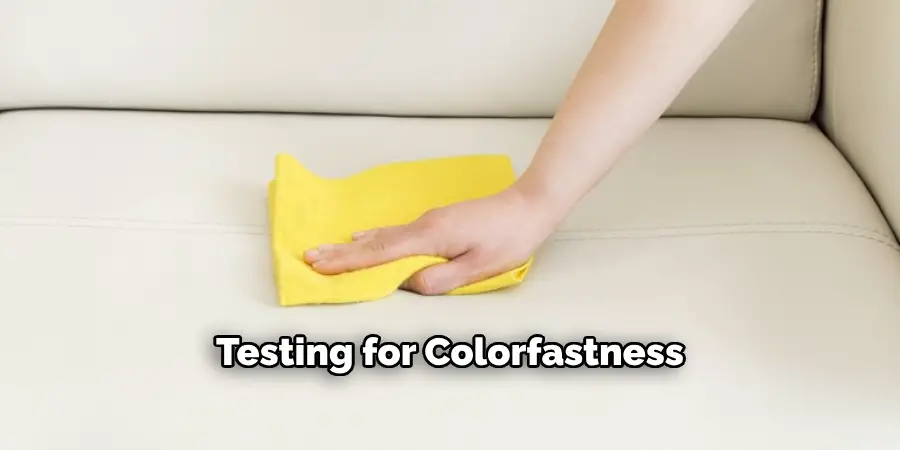
How to Remove Grease from Couch: Basic Supplies for Grease Removal
Effectively removing grease stains from your couch requires a combination of common household items and specialized cleaning products. Understanding and utilizing these supplies correctly can help maintain the appearance and longevity of your upholstery.
Common Household Items
- Baking Soda or Cornstarch: These are excellent for absorbing grease. When applied to a fresh stain, they can draw out oil from the fabric, making it easier to clean. Sprinkle a generous amount over the grease spot and allow it to sit for at least 15 minutes before vacuuming residue.
- Dish Soap or Liquid Laundry Detergent: These are effective for cutting through grease due to their surfactant properties, which break down and dissolve oil. Mix a few drops of dish soap or detergent with warm water, dampen a soft cloth, and gently blot the stain.
- White Vinegar: Known for its natural cleaning properties, white vinegar can be mixed with water to create a solution that helps break down grease. It can be paired with dish soap for even more effectiveness. Always dilute vinegar before use to prevent damage to delicate fabrics.
- Soft Cloths or Paper Towels: Essential for blotting grease stains, these items help remove excess moisture and cleaning solutions. Always blot gently to prevent spreading the stain further or damaging the fibers.
- A Soft Brush or Toothbrush: These small brushes are useful for scrubbing stubborn stains and helping work cleaning solutions into the fabric. However, they should be used with caution on delicate materials to avoid abrasion.
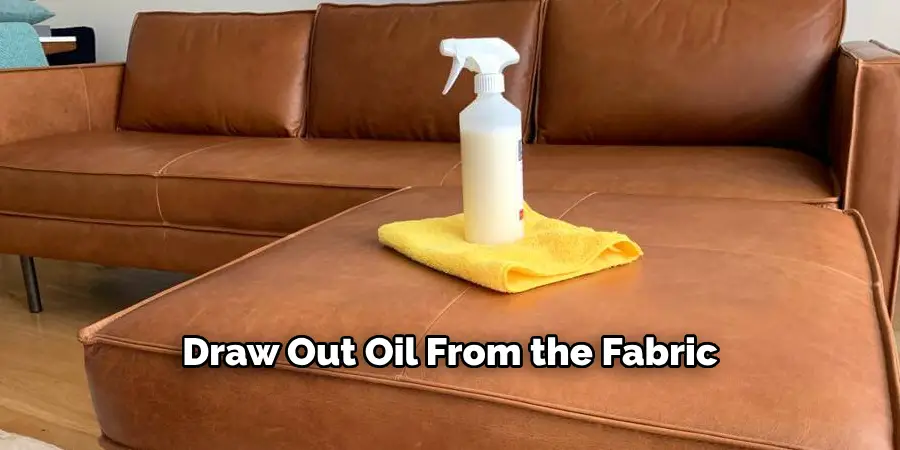
Specialty Cleaning Products
While household items are often sufficient, commercial products provide an extra edge in tackling tough grease stains:
- Commercial Upholstery Cleaners: Many brands offer upholstery cleaners designed for grease removal. These products are formulated to be safe for various fabrics and often include enzymes that break down oil and grease molecules.
- Stain Removers for Oil-Based Stains: Products specifically formulated for oil-based stains can be particularly effective on grease. Look for those that are labeled safe for your specific type of upholstery. These might include powerful solvents or surfactants that penetrate deeply into fabric fibers.
When selecting commercial products, always read the label instructions carefully to ensure they are suitable for your couch material. Test the cleaner on a small, inconspicuous area first, just as you would with household items, to check for any adverse reactions.
In summary, having a variety of cleaning supplies on hand, from simple kitchen staples to specialized cleaners, allows you to respond effectively to grease stains as they occur. Leveraging the strengths of each item while paying heed to your couch material’s needs ensures that you can maintain a clean and inviting living space.
Initial Steps for Grease Removal
Effectively managing a grease stain at its earliest stages can significantly ease the cleaning process and help preserve your couch’s fabric. Here are the main steps to take when tackling a grease stain:
Blotting the Stain
The first step in addressing a grease stain is to gently blot the area to remove as much of the excess grease as possible. Use a white paper towel or a dry cloth, as dyed materials may transfer color to the fabric. Place the towel or cloth on the stain, pressing down gently to absorb the grease without rubbing. It’s important to avoid rubbing or scrubbing motions, as these can push the grease further into the fabric fibers, enlarging the stain and causing it to spread. As you blot, reposition or replace the towel to always have a clean area absorbing the grease.
Applying Absorbent Powder
Once you’ve blotted away the excess grease, the next step is to apply an absorbent powder to draw out any remaining oil. Baking soda or cornstarch is particularly effective for this purpose. Sprinkle a generous dusting of the powder over the stained area, ensuring full coverage. Allow it to sit undisturbed for 15 to 30 minutes. This waiting period gives the powder ample time to absorb the oil fully. After the prescribed time, vacuum the area thoroughly to remove the powder. It’s best to use an upholstery attachment to avoid roughing the fabric.
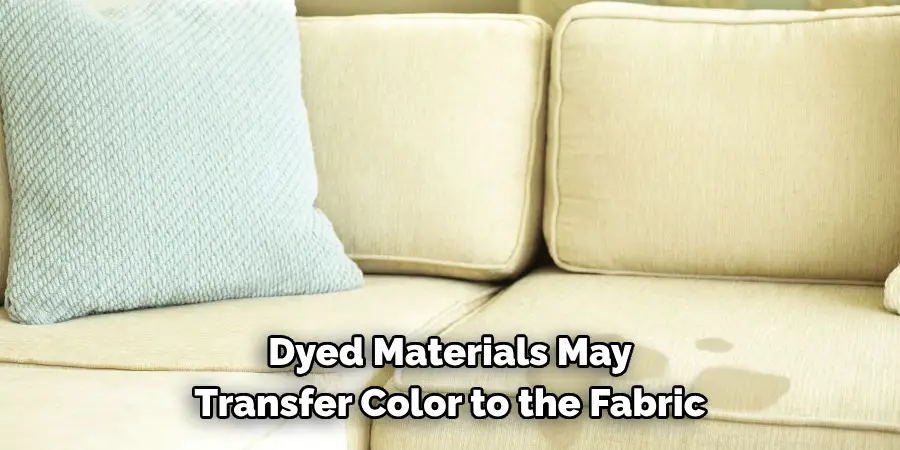
Mixing a Cleaning Solution
Following the application of an absorbent powder, a cleaning solution can be used to further address any remaining residue. Create a simple yet effective cleaning solution by mixing one tablespoon of dish soap with two cups of warm water. Dish soap is excellent for cutting through grease due to its surfactant properties. Immerse a clean, white cloth into the solution, ensuring the cloth is only damp rather than soaked, as excess moisture can damage some fabrics.
Blot the stain using the soapy cloth, working from the outside towards the center to prevent the stain from spreading. White vinegar can be used for an alternative to dish soap due to its natural cleaning properties.
Mix equal parts of white vinegar and water and apply in the same manner, ensuring that vinegar is adequately diluted to prevent possible damage to delicate upholstery. After applying either solution, use a damp cloth with plain water to blot over the area and remove any soap or vinegar residue, then allow the fabric to air dry completely.
These initial steps can be a powerful outline for choosing the right treatment when encountering a grease stain, preserving your couch’s look and feel for the long term.
Cleaning the Stain
Applying the Cleaning Solution
Once a proper cleaning solution is prepared, whether using dish soap or diluted white vinegar, the application process becomes essential to effectively remove the stain without causing damage. Begin by dampening a clean, white cloth with the solution—ensure the cloth is only slightly damp rather than soaked to prevent excess moisture from seeping into the upholstery, as excessive wetness can damage certain fabrics.
Gently dab the cloth against the stain, working methodically from the outside edges toward the center. This technique helps prevent the stain from spreading outward, containing it in a smaller area. Maintaining a light touch is crucial; aggressive dabbing may embed the grease deeper into the fibers. Patience during this step often yields the best results.
Scrubbing with a Soft Brush
A soft brush or toothbrush can provide additional cleaning power for stubborn grease stains that don’t fully lift with gentle dabbing. With the cleaning solution still applied, use the brush to gently scrub the affected area in small, circular motions. This can help work the solution further into the fabric fibers, breaking down grease residues more effectively. Continuously check the area for progress, pausing the scrubbing action intermittently to avoid damaging the fabric.
Over-scrubbing, especially on delicate materials, can lead to abrasion or wear, so it’s important to assess the fabric’s response and proceed cautiously. Once you notice the stain has started lifting, you can cease scrubbing.
Rinsing and Drying
After the stain has been treated, it is vital to remove any remaining cleaning solution to prevent residue build-up. Use a new, clean, damp cloth to gently blot the area, lifting away soap or vinegar remains. Rinsing properly helps keep fabrics from becoming sticky or discolored over time. Follow up by pressing a dry towel against the treated spot to absorb any moisture.
The final and equally crucial step is to allow the area to air dry fully. Ensure the fabric is in a well-ventilated area, which speeds up the drying process and helps avert any possible odors from forming. By thoroughly drying the spot, you help preserve the fabric’s integrity and restore your couch’s inviting look.
Conclusion
In conclusion, knowing how to remove grease from couch upholstery can significantly impact the preservation and appearance of your furniture. The process begins with quickly addressing the stain through blotting, followed by applying an absorbent powder like baking soda or cornstarch. Next, mix a suitable cleaning solution using dish soap or diluted vinegar, and gently dab or scrub the fabric, employing tools like a soft brush if necessary.
Thorough rinsing and careful drying are crucial final steps to ensure no residue remains. Acting swiftly to manage the stain is essential, as prompt treatment can prevent the grease from setting in. Proactively maintaining your couch can stave off future stains and prolong its aesthetic appeal. There’s undeniable satisfaction in restoring your couch to its former glory through diligent care and informed cleaning techniques, ensuring the comfort and allure of your living space for years to come.

